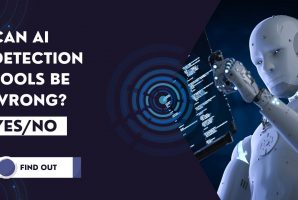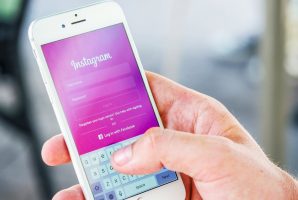Technology is gaining momentum at a fanatic pace but with consequences. Once you get to know a new technology, the decision to adopt it becomes the next challenge in-line. Unfortunately, most of us get into a dilemma at this point. Artificial Intelligence, Machine Learning, Edge Computing are one of those techs where the decision to change never comes lightly.
What is Edge Computing? You might think of the term as an emerging buzzword but what if I say the tech is not new. Much like artificial intelligence invented in the 1950s but took ample years to bring to practice, edge computing has been in talks since at least the 90s. And since we are dealing with computationally intensive and process massive amounts of data day in day out, we have reached a place where computing at the edge is a must-have. With more and more AI systems running in data centers that are miles away from places where the action takes place. Several devices like smartphones, self-driving cars, and drones are found relying on these brains in the cloud to perform the necessary complex computations.
In simple words, edge computing is where you generate, collect and analyze data on edge- the cloud, a place where data is generated instead of being in centralized servers and systems.
Why it matters the most? Much to surprise, clouds have reached the earth. And smart devices are found taking some of the processing workloads. But the question is can’t these clouds handle everything why there is a need for edge computing?
#1 Internet of Things (IoT) is the Edge
With the advent of new technologies, businesses have started relying heavily on them to process data at a fast pace. IoT devices especially the once that require instant data processing and analysis can make cloud latency too slow. If you opt for edge computing, then these IoT devices become more useful since they provide interactive feedback immediately.
#2 The network
Tell me what comes to your mind as soon as you think about an IoT device? I guess Amazon’s Alexa or Google assistant. Do you know what the major issue is, it is we cannot wait a few milliseconds to get a response. Imagine if the same latency is on your edge device? I am sure it could act as a major turn off. Milliseconds can mean success or failure.
#3 Cloud & Edge
To be very precise, edge computing doesn’t actually need the cloud to work. Well, I am not saying that it is the most effective or efficient type of infrastructure, but it can be definitely treated as cloud computing’s significant other. Of course, they are great in when separated, but they do work wonders when together.
AI in Edge Computing
IoT is opening new avenues of opportunity for businesses seeking all over to deliver enhanced levels of service. With more and more edge devices being intertwined with core analytics systems, edge devices themselves start becoming more intelligent.
The top AI-enabled edge devices, regarding unit volumes, will include mobile phones, smart speakers, automotive sensors, drones, consumer and enterprise robots, PCs/tablets, head-mounted displays, and security cameras. This means Artificial Intelligence can be combined with wearable health sensors, building or facility sensors, and networks of sensors planted around facilities or even entire cities. Down below I would like to mention a few benefits of AI-enhanced decision-making at the edge.
- It is highly responsive- Unlike any typical centralized IoT model deployed to date, edge-based AI ones are highly responsive and closer to real-time. Here you can receive insights on the instant basis and processed, most likely within the same hardware or devices.
- It ensures greater security– Do you know that sending data back and forth with Internet-connected devices might result in data to tampering and exposure? Whether you are aware of it or not this can definitely worsen the situation. Processing at the edge not only minimizes this risk but even these edge-based AI-powered devices can offer something beyond such as enhanced security features.
- It is highly flexible- Smart devices support the development of industry-specific or location-specific requirements, from building energy management to medical monitoring.
- It doesn’t require a Ph.D. to operate– It may quite interest you to know that they can be self-contained, this means gone are the days when devices required data scientists or professionals to monitor or maintain at regular intervals. With AI-based edge, everything is changed! In case, if anyone wants insights they can be delivered when needed, or visible on the spot through highly graphical interfaces or dashboards.
- It provides for superior customer experiences- Do you know that AI helps companies build trust and rapport with their customers? Yes, it does! All you require to do is enable responsiveness through location-aware services, or rerouting travel plans in the event of delays.
A Few AI Edge Computing Use Cases to Consider
1. Consumer IoT
According to sources, Microsoft has made a $5 billion investment in IoT to empower the intelligent cloud and intelligent edge. These services are meant to secure data no matter where it is stored. One of their intelligent edge solutions is Azure Sphere which is mainly used to power and protects connected microcontroller unit (MCU)-powered devices. You will find this interesting that around 9 billion MCU-powered devices are been shipped every year, which powers everything from household stoves and refrigerators to industrial equipment and what not!
2. Industrial IoT
In order to make a mark in the field of industrial internet of Things (IoT) and GE Digital is adding features to its Predix platform as a service (PaaS). As a result, whether they be pumps, valves, heat exchangers, turbines or even machines on the move, these industrial enterprises run predictive analysis to data sources.
The main vision behind edge computing is to analyze data in near real-time, cut costs, and optimize network traffic. Over the past few years, it seems to be working to integrate the company’s field service management (FSM) software with existing GE products as well as third-party tools.
3. Embedded computing and robotics
Like it or not, Artificial Intelligence technology is still considered in its infancy. However, it has proven its value in several ways such as advanced driver assistance systems (ADAS), sense-and-avoid drones, collaborative robots (robots), and a host of other embedded applications, etc. Initially, machine learning frameworks were developed to run on data center infrastructure, but they lacked in creating CNN’s/DNNs on data center infrastructure.
4. Smart Grids
A smart grid is a crucial concept where one can establish two-way communication by using Internet Protocol between distribution infrastructure, consumer and the utility head end. Whether its residential rooftops or solar farms, commercial solar, electric vehicles and wind farms, smart meters are generating a ton of data irrespective of the product. As a result, several utilities can be viewed in terms of energy available, allowing their demand response to become more efficient, avoid peaks and of course, reduce costs.
5. Intelligent Traffic Management
With edge computing, professionals cannot just analyze but even process data on the traffic hardware itself. Moreover, this will also help them out in finding different ways to get rid of unnecessary traffic. Which certainly means that the overall amount of data that needs to be transmitted across a given network is reduced and the reduction in operating and storage costs is an added benefit.
What the future holds?
With intelligent edge, humans can simplify multi-faceted processes by replacing the manual process of sorting and creating actionable plans, identifying complex data, and key insight. In addition to this, such sort of technology can help in gaining better decision-making, improved ROI, operational efficiency and cost savings.
Like this:
Like Loading...













 7 Tips to Help Small Business Blogs Dominate The Competition
7 Tips to Help Small Business Blogs Dominate The Competition
Hi.. Robin.. great content shared by you.. thank you..
Hii Robin,
Great Work Sir Thank you for sharing article about AI.
Thank You for sharing article about Artificial Intelligence.
Great! I never know this before yet, thanks to increasing my knowledge, you did a fantastic job.
Hi Teaira,
Good post with excellent information. AI is gaining popularity every passing day. It will be quite interesting to see the impact AI and edge computing has in the years to come.
Thanks for sharing this post. Have a good day.